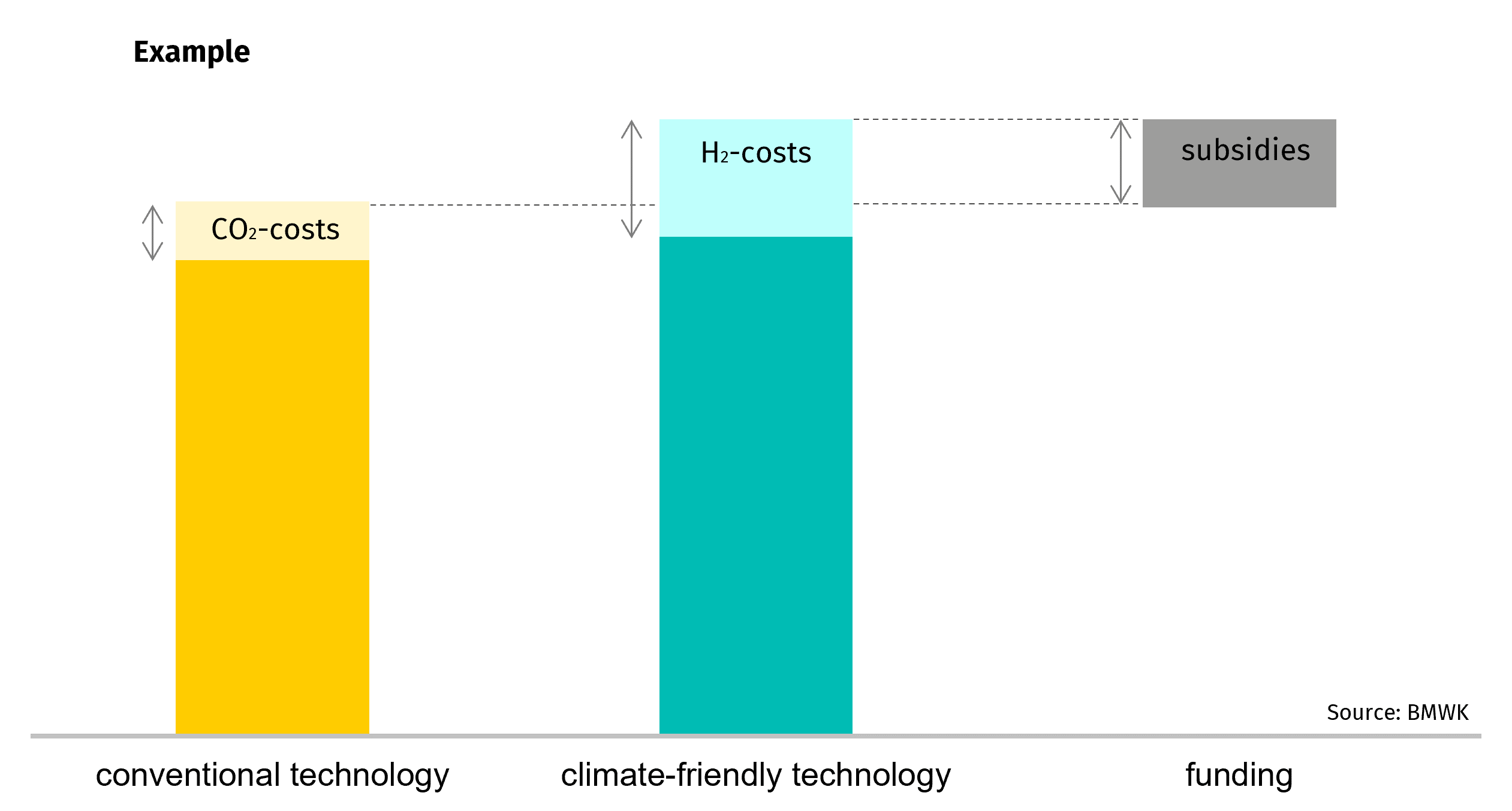Carbon Contracts for Difference
Carbon Contracts for Difference - what’s behind them?
Carbon Contracts for Difference are climate protection agreements between the Federal Ministry for Economic Affairs and Climate Protection (BMWK) and the operators of emission-intensive industrial plants. Their purpose is to make climate-friendly manufacturing processes economically viable. The CCfDs compensate for the additional costs of transformative, low-emission manufacturing processes compared to conventional technologies. This creates a positive investment environment and financial incentives for the use of innovative, climate-neutral technologies, allowing companies to switch to more climate-friendly production practices. In this way, the CCfDs will make a significant contribution to the transformation of the industrial sector and to climate neutrality in Germany.
Objective of funding
The CCfDs focus on emission-intensive industrial sectors, such as the the paper, chemical, metal or glass industry. These will be subsidised for a period of 15 years to ensure that the road to climate neutrality is rapid and cost-efficient. The aim of the programme is to directly save around 350 megatonnes of CO₂ equivalent by 2045 and prevent greenhouse gas emissions from being shifted abroad. The CO₂ contracts for difference also provide an incentive for the necessary technologies and infrastructures to be developed and implemented in Germany right now in order to promote national innovations for the decarbonisation of industry worldwide.
How CCfDs work in practice
CCfDs are concluded between the state and the investing company. The European Emissions Trading Scheme (EU ETS) serves as the reference market. As such, the contract guarantees the difference between the agreed CO2 contract price and the price of a CO2 certificate for emission reductions compared to the value of a conventional reference technology. If the contract price is above the current CO2 price level, the state subsidises the
project in the first few years. However, if the CO2 certificate price rises above the contract price, the company is obliged to pay the difference back to the state. The free allocation of certificates to the project which the company can sell at the fixed CO2 certificate price guarantees a fixed CO2 price for emission reductions that reliably incentivises the company to reduce its emissions.

Latest developments
The implementation of the Climate Protection Contracts funding program began in summer 2023 with a first bidding round in which companies from various sectors of the energy-intensive industry from all over Germany took part. Of the 17 companies that submitted a bid, 15 were awarded a contract. The signed climate protection contracts reach a maximum funding volume of around 2.8 billion euros.
In the period from 29 July to 30 September 2024, companies in the energy-intensive industry once again had the opportunity to submit information on their decarbonization projects as part of a second preparatory procedure in order to participate in the subsequent second bidding process.
The BMWK (Federal Ministry of Economics and Climate Protection) is currently running a public consultation process until 17 January 2025. As part of this, interested companies, associations and other affected organizations were able to submit comments on the funding guideline for climate protection contracts, which are currently being analysed by the BMWK and then incorporated into the further procedure.
Further information
The latest news and background information on the CCfDs can be found on the BMWK website.
Get in touch with us!
Do you have any questions about the climate protection contracts or need further information? Feel free to write to us - we look forward to hearing from you!